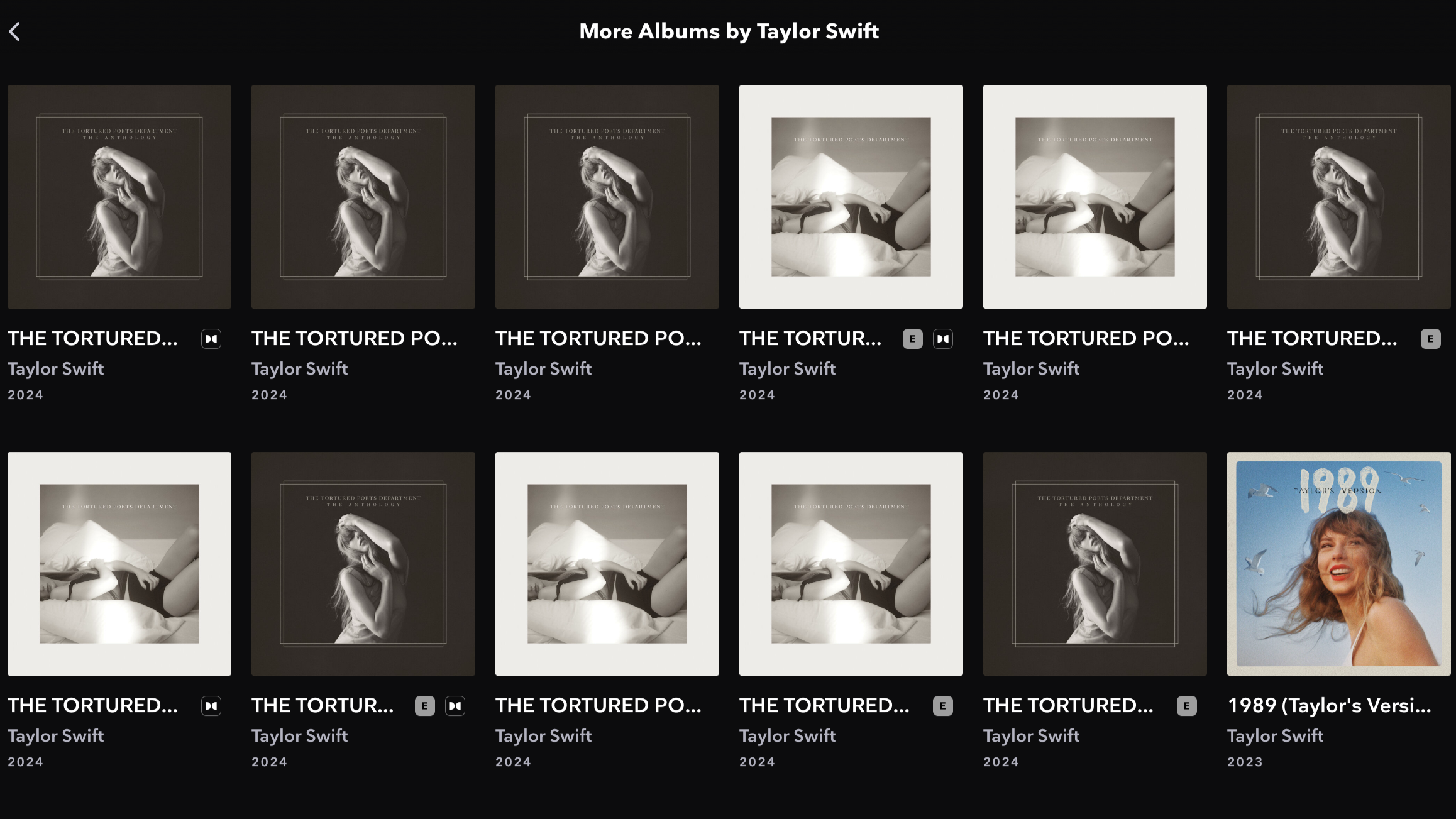
Unless you've been living under a particularly secluded rock on a faraway desert island, you might be aware that Taylor Swift is a particularly notable figure in pop culture at this point in time. Whether that be her numerous Grammy Award wins or her sold-out worldwide Eras Tour, it's been hard to escape her presence, and it's about to get even harder now that her new album, The Tortured Poets Department, has hit streaming services.
Now, I'll make no attempt at hiding the fact that I'm what you could call a "Swiftie", although I'm perhaps not as deranged as some fans out there, which I take great pride in. That being said, I am a huge fan of her last three albums, with 2020's Folklore remaining a constant fixture within many of my playlists. Henceforth, I was keen to dive into Swift's latest album, especially the 31-track extended edition.
After a preliminary listen on Spotify (which I thoroughly enjoyed), I decided to try it once again, but this time in Dolby Atmos on Tidal. I haven't dug quite as deep into spatial audio music as I'd have liked up until now, due to the fact I (controversially) switched to Spotify back in May of 2023 thanks to its much superior playlists, social feature set and compatibility with my current gear (namely my trusty Sonos One smart speaker).
However, dipping my toes back into Tidal reminded me how much better it sounds thanks to its higher bitrate streaming and improved format support. The enhanced clarity mixed with the richer and more engaging sound gave me a greater appreciation of this album, and it's been my preferred method of listening over the weekend. The Dolby Atmos mix of this album is also a triumph, with the combination of swirling sound effects and vocal harmonisation throughout the album being given ample room to breathe. This is especially evident when I don my Sony WH-1000XM4 Bluetooth headphones, in which the spatial experience is amplified to a greater extent.
It frustrates me to this day that Spotify still doesn't have support for Dolby Atmos despite Tidal, Apple Music and Amazon Music Unlimited all having this feature for years. Not only that, but each of these services costs the exact same price as Spotify for a personal monthly subscription, all while offering better quality audio – do not get me started on Spotify HiFi, I'm convinced it's never happening.
While my reunion with Tidal had me briefly rethinking my streaming service of choice, I've already decided that I'll be sticking with Spotify; now I know how that sounds after I've just made a plethora of complaints regarding sound quality, but Tidal's aversion to sorting its user experience out is simply enough for me to steer clear for daily listening. Spotify's user interface isn't perfect, but it's head and shoulders over Tidal's confusing presentation.
I'll use my recent experience with trying to stream The Tortured Poets Department as an example as to why I find this to be an issue. Locating the album was the first hurdle, as searching the album's name brought up Tidal's charts playlists first, and then there appeared to be a parody cover album, before finally coming to an official track listing for the song with the same name as the album.
I finally found the standard edition of the album towards the bottom of the results, with the Dolby Atmos mix just below. Switching to the albums tab isn't much use either, as there appears to be a myriad of albums uploaded with the same name from users looking to capitalise on the search traffic for the new album, as well as explicit and non-explicit versions of both editions of the album. The version I wanted ranked 14th in the search – not to mention the fact I only found it after spotting the small Dolby logo.
Truthfully, I didn't spot the different versions at first after hunting down the Dolby Atmos version, meaning I listened to the family-friendly edition of the album for more time than I'd care to admit; which is by no means a great problem, but I want the full experience that Swift intended. I even checked Taylor Swift's artist page, only to find the version of the album I was after was tucked into an "other versions" section at the very bottom below the non-Atmos version.

I'm convinced there has to be a better way of doing this; why does there need to be five separate entries for one album to encompass each option? It's a cluttered, confusing approach which makes finding the exact version I want to stream much harder than it needs to be. Hilariously, when I click the "More Albums by Taylor Swift" button, I'm met with no less than 11 versions of this album, each with a different sound quality option (High, Max or Dolby Atmos) and with the option to be censored or not.
Scrolling down is a dire experience, as I'm met with 20 (yes, twenty) different versions of her previous album, Midnights. Admittedly there are three editions of this album, but 20 different entries based on varying sound quality options and so forth seems wildly excessive to me. I'll make a note that this is an issue with both the iOS and Android versions of Tidal, although the desktop version appears to have trimmed the options down.
Could Tidal not just add a toggle to let you decide what format you'd like to stream the album in, and for whether you would like the clean or explicit version, without adding a separate entry for each? This is how Apple Music does it, admittedly it still separates the explicit and clean versions, but each edition of the album gets two entries with a simple toggle to enable Dolby Atmos within the player.
To summarise my thoughts and feelings, Tidal's user experience is still getting on my nerves a year on, which is a shame because the sound quality is genuinely superior. If it could tidy up the user experience and make accessing albums more intuitive, I'd likely consider switching back to the service. As for now, Apple Music is looking more tempting by the day.
MORE:
Read our full Tidal review
Check out our picks for the best wireless headphones
As well as the 7 best Taylor Swift tracks to test your wireless headphones







